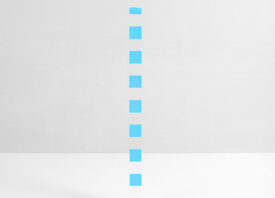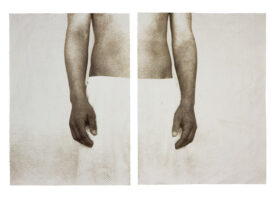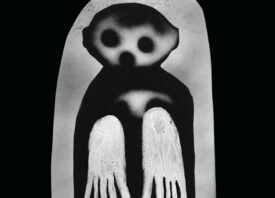Search this site
Deconstructed, Paint-Drenched Imagery by Kevin Todora
Dallas-based artist Kevin Todora juxtaposes studio photography with physical alterations that push against photographic norms. In his show at the Dallas Contemporary that runs through December 22nd, the artist features images of fruit, friends, and everyday objects drenched with paint, as well as photographic images skewed by spray paint and various objects.
Your photos seem to be quite physical, almost sculptural. What inspired you to start investigating photography’s potential to be deconstructed and used as sculpture?
“Previously I had been doing photo work on a more commercial level and wanted to separate it from what I was doing in the studio. Some of what I was doing in school was taking images from all kinds of media and pushing against them with cuts and paint—it was almost some form of therapy. I enjoy the juxtaposition of materials, and I like to think of what I am doing as taking control of an image and renegotiating its purpose.”
I’ve noticed that there is a very pronounced movement right now in art photography to deconstruct the image physically. Why do you think this is?
“I can’t help but think that as individuals we are constantly bombarded by photographic imagery. There is so much material to work with physically and digitally. Personally, I was interested in ideas of negation and subversion: pushing against images.”
In some of your work you paint directly onto the photographs and in others the paint is a part of the photographic image. How do you decide what images will be manipulated by hand and others manipulated before the camera?
“The photos with paint applied to the surface were mostly made by pouring the paint and allowing chance to determine the outcome. I would pretty much relinquish control, and as you can imagine it didn’t always go so well. I’m not opposed to working in this manner now, but much of what I’ve been shooting recently is manipulated before camera. There is still an element of chance in many of the new images—the ones that incorporate poured or sprayed paint as part of the photo, but I have more control over how the final product will look.”
This post was contributed by photographer Trey Wright.











